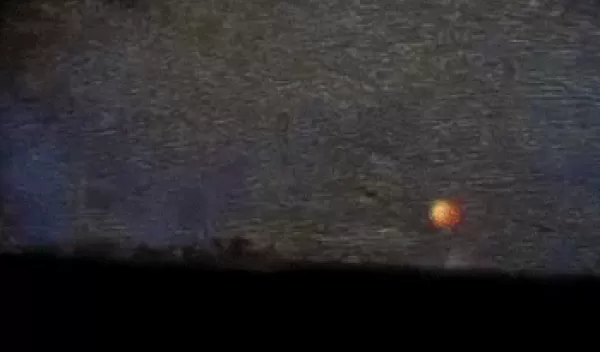
Engineering the spark that starts the wildfire
Hot metal fragments can be created from power lines, overheated brakes, railway tracks or any other manner of metal-on-metal action in our industrialized society.
The particles can reach more than 5,000 degrees Fahrenheit, around the boiling point of most metals.
Although these bits cool as they fall to the ground, they can ignite a flame that quickly spreads if they land on a prime fuel source like pine needles or dry grass.
At least 28,000 fires occur each year in the United States due to hot metal hazards, according to a 2013 U.S. Department of Agriculture report. For instance, in 2007, a spark from power lines traveled over the wind and landed in dry grass near Witch Creek Canyon in California. Days later, 1,100 homes and 200,000 acres had burned, with $1.8 billion in losses.
Some human-caused ignitions are on the decrease, such as those caused by cigarettes and arson. But fires that bloom from stray particles continue to be a problem, particularly around mid-sized populations where there is just the right cocktail of civilization and natural fuels.
Engineers supported by the National Science Foundation (NSF) are learning what ingredients and conditions cause this type of fire-starting, known as spot fire ignition.
Recipe for ignition
Anyone who has ever tried to light a campfire knows making fire involves a lot of variables.
Combustion is essentially a chemical reaction that's determined by temperatures and material makeup. For spot fire ignition, the situation becomes more complex, because environmental conditions play a big role.
"The least understood aspect of the spot fire problem is what happens after a particle lands on a fuel bed," said Carlos Fernandez-Pello, mechanical engineer at the University of California, Berkeley. "The other two parts of the process, particle generation and particle flight, have been relatively well-studied."
Fernandez-Pello and his team mixed metal types and sizes, fuel bed characteristics and wind conditions to see what combinations create fires.
Using elegant tabletop experiments, the engineers experimented with a variety of metals and fuels, attempting to replicate real-world conditions.
"Obviously, a study of this complexity is difficult to conduct," Fernandez-Pello said.
Brass, stainless steel, copper and aluminum ranging in size from roughly a pencil tip to an eraser were heated to temperatures from 1,100 to 2,200 degrees Fahrenheit. The metals represent those used in activities or events that are known to cause fires, like welding, drilling, metal-cutting and power surges.
In reality, some fragments get even hotter, but the researchers were limited by lab equipment.
The metals were then flung into beds of barley grass, pine needles, shredded paper and ground grass and paper--similar to fuels found in the wilderness.
"One of the most difficult experimental challenges was finding ways to make consistent fuel beds, ensuring the same density and moisture content," said Berkeley graduate student researcher James Urban. "Another difficult part was videotaping the ignition events, which usually happens less than a tenth of a second after the hot particle touches the fuel bed."
We didn't start the fire
The engineers found relatively large fragments could ignite blazes even at low temperatures, if the fuel was of a certain type. Large shards might come from overheated vehicle brakes, bearings or result from sloppy welding.
Small fragments, although more likely to be produced, required higher temperature to ignite fires. The size, shape and arrangement of the individual fuel pieces (e.g. needles, grass, shredded paper or grind size) also mattered. The finely ground, dried wood caught fire most easily.
Ignition required a minimum fragment temperature that depended on the fragment's size and the fuel characteristics.
The data can help inform computer models that predict fire likelihood based on weather, particle and fuel bed characteristics.
"Enhanced fire spread models could give land managers and government agencies better tools to take preventative measures," Fernandez-Pello said.
Selective clearing around highways and railroads is one form of fire prevention. Planners often err on the side of caution, understandably. But with more accurate models, more strategic city planning could save trees and prevent forest fires, which is something Smokey can get onboard with.
The results also have uses beyond wildfire prevention.
"The ignition of transportation and rocket fuels share many similarities with wildfire fuels," said Ruey-Hung Chen, program director in NSF's Division of Combustion and Fire Systems, which helped fund the research. "The wildfire ignition research can benefit a wide range of combustion applications."


